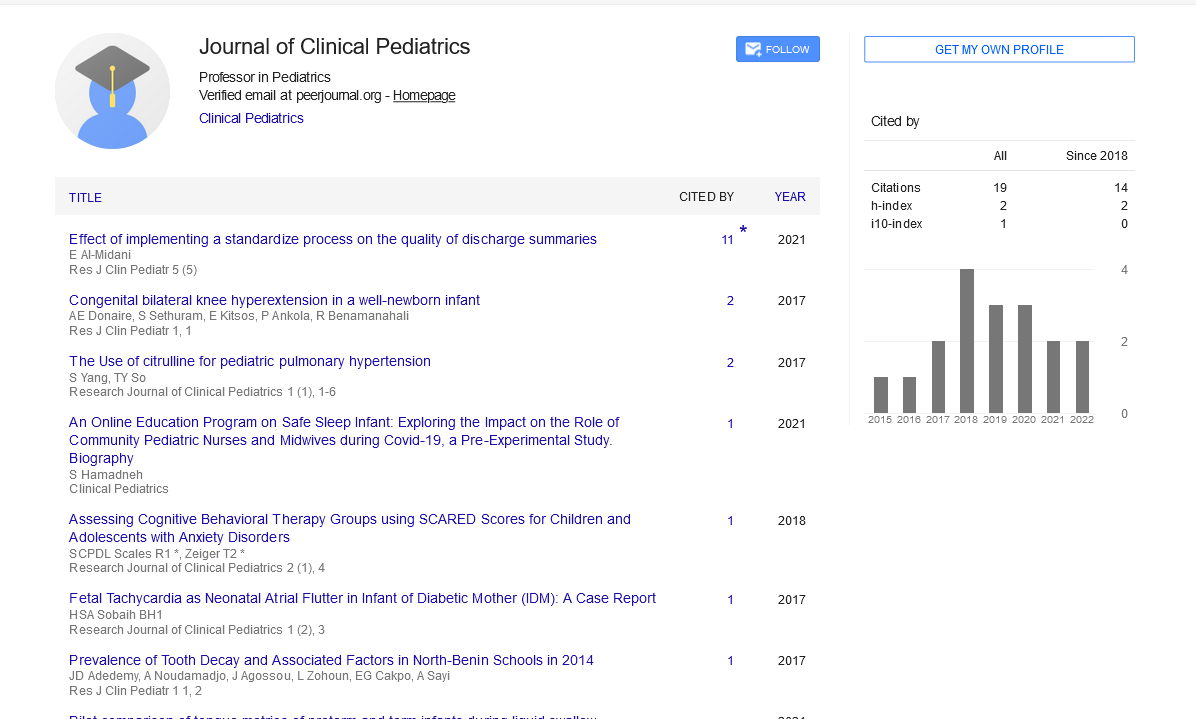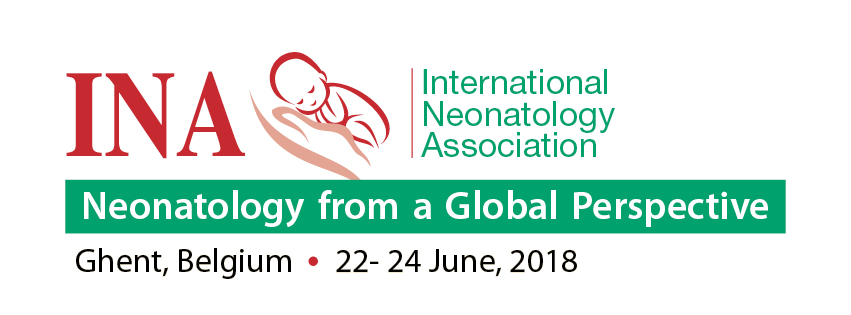Case Report, Res J Clin Pediatr Vol: 2 Issue: 2
The Significance of Newborn Heel Blood Test: A Case Report with Congenital Hypothyroidism and Indirect Hyperbilirubinemia
Muhammet Mesut Nezir Engin1*, Onder Kilicaslan1 and Ilknur Arslanoglu2
1Duzce University School of Medicine, Department of Child Health and Diseases, Turkey
2Duzce University School of Medicine, Department of Pediatric Endocrinology, Turkey
*Corresponding Author : Muhammet Mesut Nezir Engin
Duzce University School of Medicine, Department of Child Health and Diseases, Turkey
Tel: +90 (542) 63788 10
E-mail: doktormesut@hotmail.com
Received: August 14, 2018 Accepted: September 03, 2018 Published: September 10, 2018
Citation: Engin MMN, Kilicaslan O, Arslanoglu I (2018) The Significance of Newborn Heel Blood Test: A Case Report with Congenital Hypothyroidism and Indirect Hyperbilirubinemia. Res J Clin Pediatr 2:2.
Abstract
Diseases such as phenylketonuria, congenital hypothyroidism, cystic fibrosis and biotinase deficiency can be detected with the Heel Blood Test, which is a simple and inexpensive method with a few drops of blood in the next 5-10 days after birth. In the Heel Blood Test, we presented patients who were diagnosed with Congenital Hypothyroidism and Indirect Hyperbilirubinemia due to TSH (Thyrotrophin-Stimulating Hormone) elevation, who were followed-up after the examination and imaging procedures and wanted to emphasize the importance of screening programs in neonatal period.
Keywords: Congenital hypothyroidism; Indirect hyperbilirubinemia; Jaundice; Heel blood test
Introduction
The first incidence of phenylketonuria in Ankara in 1983 with a pilot study to investigate the screening program began in Turkey, has been expanded upon determination that high. Diseases such as phenylketonuria, congenital hypothyroidism, cystic fibrosis and biotinase deficiency can be detected with the Heel Blood Test, which is a simple and inexpensive method with a few drops of blood in the next 5-10 days after birth [1]. Jaundice is the most common problem in the newborn and should be carefully monitored with the reason for the toxic effects of bilirubin. Hypothyroidism, one of the causes of indirect hyperbilirubinemia, is one of the most important endocrine diseases of childhood [2]. Congenital hypothyroidism Symptoms and signs are very rare during the neonatal period. It is very important to detect congenital hypothyroidism in the early period and to eliminate the cause of the effect of thyroid hormone on the child's motormental development. We aimed to emphasize the importance of screening programs performed during the newborn period by presenting the patient who was diagnosed with Congenital Hypothyroidism after examination and imaging procedures which was directed by me because of TSH (Thyrotrophin-Stimulating Hormone) height in Heel Blood Test.
Case Report
A 23-year-old mother was born with a caesarean section weighing 4070 g. During the Heel Blood Test TSH: 61 IU/mL (0.34-5.6) resulted in the direction of the family physician and the patient was brought to our Neonatal Polyclinic on the 11th day. There were no attributes in his CV and Family History. On physical examination, skin was slightly icteric, pulse rate was 120/min, respiratory rate was 48/min and other systemic examinations were evaluated naturally. TSH: > 49.500 IU/mL, sT4: 0.26 ng/mL, Hemoglobin: 18.1 g/dL, Leukocyte: 12200/uL, Trombosit: 381000/uL, Total bilirubin: 17.89 mg/dL, Direct bilirubin : 0.84 mg/dL, AST: 51.2 U/L, ALT: 31 U/L and Urea, BUN, Urine and Electrolyte values were evaluated as normal. Patient was admitted to newborn Service for follow-up and treatment in terms of Congenital Hypothyroidism and Indirect Hyperbilirubinemia. Treatment started with 10 μg/kg L-thyroxine and phototherapy. On the 3rd day of the hospitalization, total bilirubin was discharged upon examination of 13.5 mg/dL. The thyroid was evaluated agenesis in ultrasound and scintigraphy. The patient is still being monitored and treated with systemic findings and motor-mental development normally.
Discussion
Thyroid hormones play an important role in growth, development and brain maturation at the same time. In the early stages of life, deficiency of thyroid hormones not only affects growth and development, but also results in irreversible mental retardation due to brain damage. The diagnosis was made three months ago and the IQ level was found to be above 85 when the treatment was started. Again, 77% of these cases showed minimal brain damage in later life. In a study conducted by Süleyman and his colleagues, the average IQ levels of those who started treatment within the first 3 weeks were reported as 87 and 51 as those who started after 3 years of treatment [3,4].
Congenital hypothyroidism is one of the factors that play a role in the etiology of prolonged indirect hyperbilirubinemia. Often in the pilot study in Turkey it was reported to be 1/2700. The disease is persistent in many cases and results from a defect in the thyroid gland's anomalies (dysgenesis or agenesis) or thyroid hormoneogenesis. It may be seen temporarily in the newborn period due to thyroid functions, such as transient through the placenta, antibody to the mother in the mother, or iodine deficiency or excess, administered to the mother. Occasionally, hypophyseal or hypothalamic abnormalities may develop (central or secondary hyperthyroidism) [3].
Premature babies are termed prolonged jaundice in hyperbilirubinemia, which is over 10 mg/dl over 21 days, suggesting that there may be a serious underlying pathology [1]. First, the causes of conjugated hyperbilirubinemia should be ruled out by looking directly at bilirubin. Hematologic diseases and hypothyroidism are usually seen in the pathological tables and rarely occur in cases of blood outside the blood vessels such as cephalic hematoma and intraabdominal hemorrhage as well as causes such as Gilbert's syndrome, Crigler-Najjar syndrome and pyloric stenosis [5].
Conclusion
In conclusion, hypothyroidism is a very important disease that requires early diagnosis, follow-up and treatment, short-term indirect hyperbilirubinemia if not diagnosed and long-term retardation in motor development. If the patient was not diagnosed, indirect hyperbilirubinemia could reach the upper limit, resulting in the development of a posterior kernicterus or long-term retardation in motor development. As seen in our case, Congenital Hypothyroidism may not give symptoms, so the screening program with Heel Blood Test is of vital importance.
References
- Ankan D, Saglik S, Bekar P (2017) Determination of the Knowledge Level among Parents of Newborns about Guthrie Test. Sted 26: 89-95.
- Sivasli E (2009) Prolonged Jaundince in Newborn Babies. Gaziantep Medical Journal 15: 49-55.
- Col Araz N (2009) The Frequency Of Congenital Hypothyroidism In The Newborn With Prolonged Jaundice. Gaziantep Medical Journal 15: 28-30.
- Suleyman K, Can S, Dilek M, Gul A, Helvaci M, et al. (2004) The relationship between the age of onset of treatment for congenital hypothyroid patients and motor, mental and physical development in the long term. 48th National Congress of Pediatrics Abstract Book, Turkey.
- Yanagi T, Nakahara S, Maruo Y (2017) Bilirubin Uridine Diphosphate-glucuronosyltransferase Polymorphism as a Risk Factor for Prolonged Hyperbilirubinemia in Japanese Preterm Infants. J Pediatr 190: 159-62.
 Spanish
Spanish  Chinese
Chinese  Russian
Russian  German
German  French
French  Japanese
Japanese  Portuguese
Portuguese  Hindi
Hindi 
